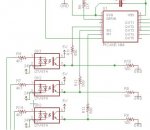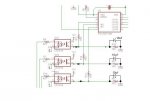lbenson
Senior Member
I'm monitoring a 24VAC line with a LTV-814 optocoupler. The picaxe (14M2) side of the optocoupler is 5V through a 680 Ohm resistor.
The logic level at the picaxe pin oscillates with the AC. Can I use a capacitor and resistor on the picaxe side of the optocoupler to get a logic level high when the AC is conducting, and low when not, and if so, what cap and resistor are appropriate?
The logic level at the picaxe pin oscillates with the AC. Can I use a capacitor and resistor on the picaxe side of the optocoupler to get a logic level high when the AC is conducting, and low when not, and if so, what cap and resistor are appropriate?
Attachments
-
24.8 KB Views: 42


